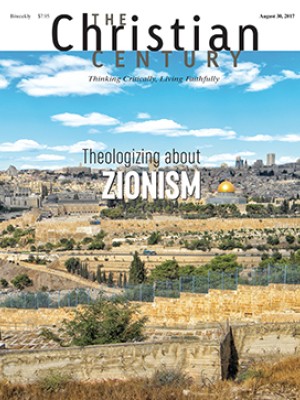Smithsonian exhibit shows religious diversity in early American life
Walk around the Religion in Early America exhibit and a broad picture of faith in the colonial era emerges: there’s a Bible translated into the language of the Wampanoag people, the Torah scroll from the first synagogue in North America, and a text written by a slave who wanted to pass on his Muslim heritage.
“Religion in early America was not just Puritans and the Pilgrims,” said Peter Manseau, curator of the exhibit, which opened recently at the Smithsonian’s National Museum of American History in Washington, D.C. “It was a story of many different communities with conflicting, competing beliefs, coexisting over time with greater and lesser degrees of engagement with each other.”
Read our latest issue or browse back issues.
The yearlong exhibit, part of the museum’s The Nation We Build Together series of exhibitions, demonstrates the range of religious expression from colonial times through the 1840s.
The gallery that recounts religious freedom, diversity, and growth is bookended by two depictions of religious life. On one end is an 800-pound church bell crafted by revolutionary rider Paul Revere in 1802. At the other end is a foldable pulpit used in the fields of the English colonies by evangelist George Whitefield in the First Great Awakening of the 1700s.
“It’s a representation of the changing forms of worship in America that then transformed the nation,” Manseau said, referring to the growth in denominations such as Methodism, which had more than 18,000 churches by 1860. “This was a new way of experiencing religious devotion, a very emotionally driven way.”
Also on view: a Boston-based evangelist’s translation of the Bible into the Algonquian language of the Wampanoag people, creating what became the first published Bible in the United States, with hopes of converting Native Americans.
Catherine Brekus, a scholar of the history of religion in America at Harvard Divinity School, said it’s appropriate for the exhibit to reflect the range of religions that existed in early America.
“The original 13 colonies were really very religiously diverse,” including “lots of different Native American religions,” as well as Jews and Muslims. “The middle colonies—Pennsylvania, New Jersey, New York, Maryland—were the most religiously diverse in early America and most linguistically diverse, too.”
On display are a 1654 Torah scroll from New York’s Congregation Shearith Israel, a page from the 1830 edition of the Book of Mormon, and an iron cross believed to have been fashioned from the ships that brought the first English Catholics to Maryland.
Additionally, some scholars estimate that 20 percent of African-born men and women were followers of Islam before they were transported as captives. A 13-page Arabic document written by Bilali Muhammad in the early 19th century reveals the efforts of a man who lived on Sapelo Island, Georgia, to leave a legacy of his Muslim faith. Considered the only known religious text written by a Muslim slave in the United States, it includes passages from the Qur’an as well as details on the basics of Islamic practice—from the times of prayer to explanations for washing hands and feet before praying.
Just a step or two away from that small volume is a portrait of Omar ibn Said, a slave jailed in Fayetteville, North Carolina, after an escape attempt. He wrote Arabic verses on his cell with a piece of coal. He converted to Christianity after being sold to a prominent Presbyterian family.
“He becomes, in a minor way, kind of a media figure in the 19th century,” said Manseau of a time when stories of his conversion in the southern Christian press placated fears sparked by a recent Muslim slave revolt in Brazil.
The exhibit also includes examples of how faith was lived outside of houses of worship. There is an 1820s set of 45 Noah’s ark figures, a children’s book from the mid-1800s that begins with “A is for Adam,” and a silver bowl from the home of Virginia patriot George Mason.
“George Mason might throw a party and chill his wine glasses in this bowl but then the next day, or the next Sunday, would christen his children in this bowl,” Manseau said. “There was no sense that one was profane and one was sacred.”
About half of the objects, such as George Washington’s christening robe from 1732, are part of the Smithsonian’s collection. The rest are on loan—such as the candlesticks and hymnal of Richard Allen, who founded the African Methodist Episcopal Church.
The exhibit, which closes June 3 next year, is part of a larger initiative by the museum to feature how religion intersects with other aspects of evolving American culture.
“Religious liberty was not immediate,” said Manseau, who wrote One Nation, Under Gods. “It was not inevitable. It was born of very practical concerns by practical people trying to create a new nation and a new way of thinking.” —Religion News Service
A version of this article, which was edited on August 14, appears in the August 30 print edition under the title “Smithsonian exhibit shows religious diversity in early American life.”






